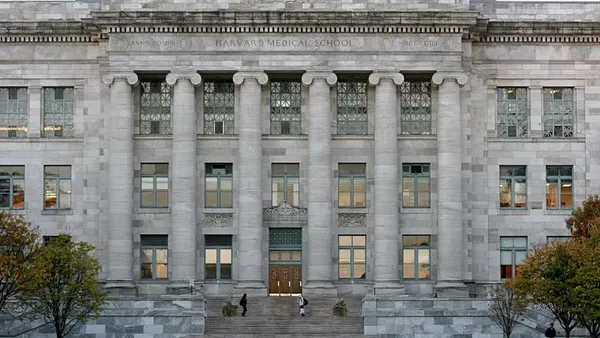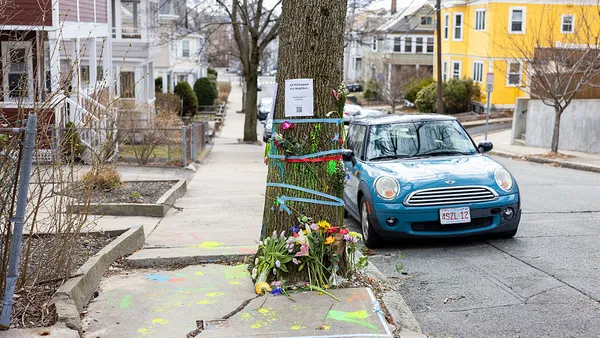Dive Brief:
- The need to finance colleges with loans is widening racial and ethnic wealth and income gaps, with a notable impact on black borrowers, according to a new report from the Center for Responsible Lending (CRL) and the NAACP.
- Black students borrow at higher rates and take out more loans than most other groups to earn a bachelor's degree, it notes. About 85% of black students took out loans in 2016, compared to 45% of Asian students, 66% of Hispanic/Latino students and 69% of white students. And black students borrowed nearly 15% more than the average student, at $33,993. Default rates were also high for this group.
- The report makes several recommendations to reduce these disparities, including better oversight of loan servicers and more funding for minority-serving institutions.
Dive Insight:
Outstanding student debt continues to grow, with some 43 million Americans owing a total $1.4 trillion in federal student loan debt alone.
The decade-long disinvestment in public higher education and the inability of underfunded colleges that serve minorities to deepen access contributes to borrowing disparities, the report notes.
In response, black and Latino students, in particular, have been disproportionate targets of for-profit colleges, many of which haven't provided students with a return on investment. That's left them with debt they can't pay back, offsetting upward mobility gains college attendance brings.
The report makes a mix of technical and broad suggestions for how lawmakers can better hold colleges accountable to reduce the access and equity gap in higher education.
Among them is changing the income-driven repayment calculation, which the report's authors write would have a substantial effect on borrowers.
There are three proposals for change:
- Individuals earning less than $23,000 (as opposed to $13,000 under the current income-driven plan) would not make payments.
- Payments would be calculated at 8% of discretionary income instead of the current 10%.
- The repayment plan would end after 15 years instead of 20.
"This way debtors would have a bigger buffer protecting their core income, which would then pay for child care, food and the like, and will protect more income in general," said Julia Barnard, a researcher at CRL. "Shortening the repayment plan will help folks have more manageable payments."
The report also recommends stopping the flow of federal dollars to for-profit colleges that aren't providing students with a return on their investments. Requiring GI Bill and Defense Department funding to count toward the maximum share of federal dollars these colleges can claim as revenue could help, the report notes. Lawmakers also could shrink that share from 90/10 to 85/15.
Reinstating the gainful employment and borrower defense rules can also help hold colleges accountable, the report explains.
The broader-strokes changes CRL and NAACP suggest reflect the priorities of advocates for access and equity in higher education. They include improving repayment options and providing debt relief, as well as strengthening loan servicing standards and oversight.
"A serious commitment to making access to higher education equitable requires partnership with the federal government," Barnard said. She added that the NAACP and CRL are encouraged to see the 2020 Democratic candidates "taking such issues seriously."
Democratic presidential nominee hopefuls Elizabeth Warren, D-Mass., and Bernie Sanders, D-Vt., have both put forward expansive proposals to cancel student loan debt and make public college free. Other Democrats are approaching those two issues at a smaller scale. Many candidates are also calling for more support for HBCUs, The Atlantic reported.














